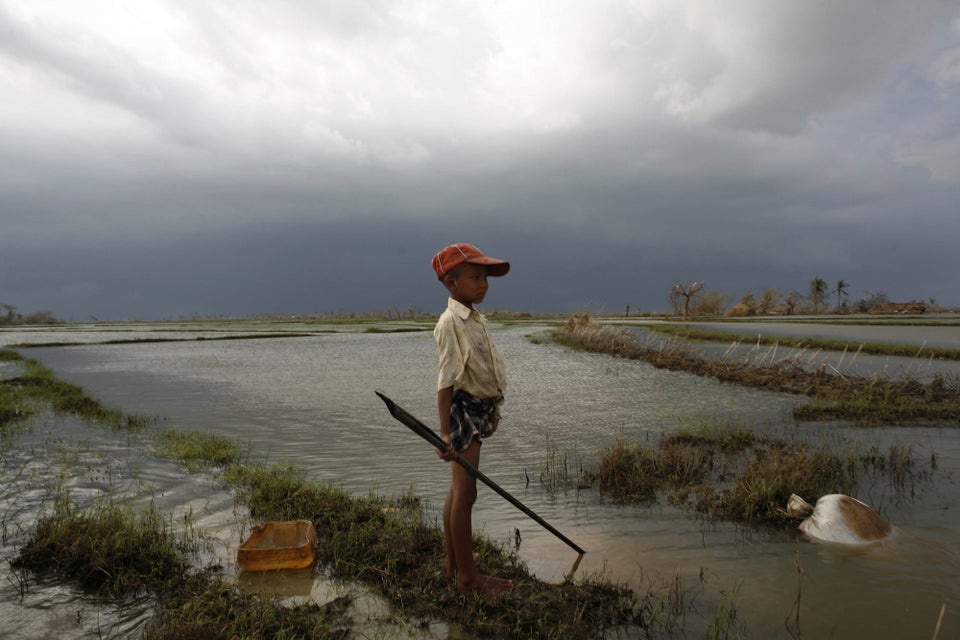Scientists battling to slow climate change and cope with its effects are harnessing an overlooked, yet potentially powerful partner -- one that happens to be right beneath our feet.
Soil, they say, is critical to reducing the buildup of carbon dioxide in the atmosphere, where it traps heat and warms the planet. Keeping soil healthy also can go a long way in maximizing crop productivity and minimizing severe droughts, floods and storms that scientists say will only become more common as man-made emissions continue pushing the climate along its dangerous path.
"Climate change can be overwhelming. Yet there is real hope," says Michael Pollan, a journalist and food advocate, in a new video on soil and climate shown in Paris during the 21st Conference of the Parties, or COP21, earlier this month.
(Story continues below video.)
Through photosynthesis, plants draw carbon from the air and deposit it in soil. However, over the last few centuries, human activity has significantly depleted that natural store of carbon, both directly through agricultural practices such as tilling, and indirectly through anthropogenic climate change. What's more, a vicious cycle is underway, as global warming accelerates the rate of carbon released from soil due to extreme weather breaking it down and hotter temperatures stimulating soil-decomposing microbes -- the latter being a particular concern in permafrost regions that are now melting. This, in turn, further warms the surface of the planet, sending yet more carbon into the atmosphere.
But strategies such as keeping soil covered by plants, increasing the diversity of crops and composting can replenish soil's carbon stocks, scientists say.
At the Paris climate summit, the French government launched an international initiative called 4 Pour 1000, which calls on nations to voluntarily enlist such methods to increase soil carbon by 0.4 percent every year. If the entire world got on board, Pollan explains in the video, we could capture and store about three-quarters of our annual greenhouse gas emissions.
Ben Chou, a researcher with the Natural Resources Defense Council, authored a report in November that investigated the power of cover crops to slow climate change. Assuming, hypothetically, that half the corn and soybean acres in the top 10 U.S. agricultural states used cover crops, he found that U.S. farmers could store more than 19 million metric tons of carbon -- the equivalent of taking about 4 million cars off the road.
Still, some experts caution against putting too much confidence in soil as a solution to climate change, especially when considering the realities facing today's farmers.
"Many farmers are just trying to stay alive, and are not concerned about carbon storage," said Ronald Amundson, a soil expert at the University of California, Berkeley. Even if a farmer succeeds in capturing carbon in soil, what's not to say that he or she dies or sells the land, or decides to change practices? If the land is subsequently plowed, he said, it could quickly spew that carbon back into the atmosphere.
"The 'soil solution' diverts attention from the root cause of our problem: a carbon-based economy," added Amundson. "What we should be focusing on -- as COP21 did -- is significantly, drastically and quickly reducing our reliance on fossil fuels and moving toward renewable forms of energy. Only then can we solve the climate problem."
That's not to say there aren't other benefits to improving soil health. "Healthy soil will be important in helping us contend with the environmental change that is happening," Amundson said.
According to the U.S. Department of Agriculture, soil with a healthy amount of living matter, say 5 percent, can absorb about six times more water than soil containing only 1 percent organic material. And with more absorption, less soil -- as well as pesticides and fertilizers -- will run off the surface to pollute waterways, and more filtered freshwater will refill underground aquifers, explained Eric Brevik, a soil scientist at Dickinson State University. Further, if the soil soaks up a greater amount of water, it won't need as much additional water later for farming. That's crucial, considering that about 70 percent of the planet's fresh water is currently used for agricultural irrigation.
Soils support more than 90 percent of global food production. In the face of increasing food insecurity, it's worth noting that crops can grow better in carbon-rich soil.
"Even if you're not concerned about the climate aspects," said Brevik, "soil has a role to play."
Also on HuffPost:

